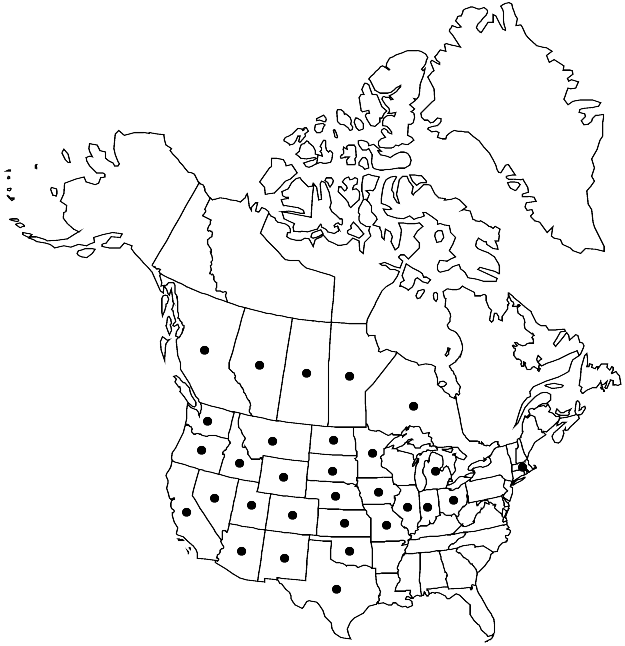Difference between revisions of "Peritoma serrulata"
in A. P. de Candolle and A. L. P. P. de Candolle, Prodr. 1: 237. 1824.
FNA>Volume Importer |
FNA>Volume Importer |
(No difference)
| |
Revision as of 20:21, 24 September 2019
Annuals, 30–80 cm. Stems sparsely branched; glabrous or glabrate. Leaves: (stipules bristlelike), petiole 1.5–3.5 cm; leaflets 3, blade elliptic, 2–6 × 0.6–1.5 cm, margins entire, weakly sinuate, or serrulate, apex acute, long-acuminate, or mucronate, surfaces glabrate (margins with sparse, relatively long hairs when young). Racemes 1–4 cm (4–30 cm in fruit); bracts unifoliate, obovate, 4–22 mm. Pedicels (green to purple), 8–20 mm. Flowers: sepals persistent, connate 1/2–2/3 of length, purple to green, lanceolate, 1.7–4 × 1–2 mm, margins denticulate, glabrous; petals purple (rarely white), oblong to ovate, 7–12 × 3–6 mm; stamens purple, 18–24 mm; anthers (green), 2–2.3 mm; gynophore 1–15 mm in fruit; ovary 5–7 mm; style 0.1–0.5 mm. Capsules (erect) not inflated, 23–76 × 3–6(–7) mm, striate, (glabrous). Seeds 12–38, black, globose or horseshoe-shaped, 2.8–4 × 2.5–3 mm, rugose. 2n = 34, 60.
Phenology: Flowering summer.
Habitat: Shortgrass and mixed grass prairies, pastures, pinyon pine and juniper woodland, desert scrub, roadsides, stabilized sand dunes
Elevation: (100-) 300-2500(-2900) m
Distribution

Alta., B.C., Man., Ont., Sask., Ariz., Calif., Colo., Idaho, Ill., Ind., Iowa, Kans., Mass., Mich., Minn., Mo., Mont., Nebr., Nev., N.Mex., N.Dak., Ohio, Okla., Oreg., S.Dak., Tex., Utah, Wash., Wyo.
Discussion
Most collections of Peritoma serrulata from the northeastern and midwestern United States apparently represent non-persistent waifs or garden escapes. The species has been cultivated as a source of nectar for honeybees since ca. 1880 (L. H. Bailey 1900–1902). It shows considerable variation in fruit size, even within populations. The variation may reflect environmental influences, especially water availability, rather than genetics (H. H. Iltis 1952).
The seeds and leaves of Peritoma serrulata are consumed by the Navajo as food and provide a source of black dye. The leaves have been used as a remedy for insect bites, inflammation, and intestinal upsets (L. S. M. Curtin 1947).
Selected References
None.